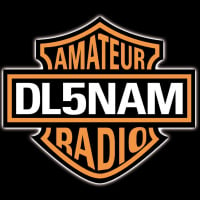Welcome to the FlexRadio Community! Please review the new Community Rules and other important new Community information on the Message Board.
Need the latest SmartSDR or 4O3A Genius Product Software?
SmartSDR v4.1.3 | SmartSDR v4.1.3 Release Notes
SmartSDR v3.10.15 | SmartSDR v3.10.15 Release Notes
The latest 4O3A Genius Product Software and Firmware
SmartSDR v4.1.3 | SmartSDR v4.1.3 Release Notes
SmartSDR v3.10.15 | SmartSDR v3.10.15 Release Notes
The latest 4O3A Genius Product Software and Firmware
If you are having a problem, please refer to the product documentation or check the Help Center for known solutions.
Need technical support from FlexRadio? It's as simple as Creating a HelpDesk ticket.
Need technical support from FlexRadio? It's as simple as Creating a HelpDesk ticket.
USB cable from the 6700 directly to a USB port on the Raspberry PI 3
Mark - NU6X
Member
USB to USB port on a Raspberry PI 3
2
Answers
-
Is there a question lurking in there somewhere?0
-
I haven't posted in a long time.... it posted before I finished typing the question.
I will try this again....I want to connect the USB port on the 6700 rear panel directly to a Raspberry PI 3 USB port that is the controller of a linear. The Raspberry PI is programmed for the standard Kenwood and Flex commands. I have read the USB manual and other post and all I see is FTDI to serial or Parallel. This is USB to USB connection. Does it require a special cable?0 -
As far as I know from Alpha you must use an FTDI approved chipset device. I see where your going here, I think your gonna need a couple of serial interfaces, one for the flex and one for the Pi... then interpret the data coming into the Pi via serial... I think...
0 -
I suspect that the Pi could be programmed to act like a FTDI device and programmed to act like one of the devices that the Flex USB interface supports and then to take that data and control the amp, but I doubt that it would work as-is. A second possibility would be to have the Pi connected to the Ethernet network and to use the Flex network protocol to talk to the Flex and whatever interface to talk to the amp. Again this would require custom programming of the Pi.0
-
Mark, but maybe we can found a solution that Flex and PA can communicate via LAN. Then no need for a USB connection.
And still open question is: need a good Amp a interface connection to TRX - if PA always check the frequency , switch automatically Band and Auto Tune do his work alone ....0 -
I think that the new Flex Power Genius Amp monitors the Flex via LAN and adjusts the amp accordingly. For amps without a LAN interface, it should be possible to develop a program that runs on a small computer, such as the Raspberry Pi that monitors the Flex via LAN and controls the amp via whatever interface/prootocol the amp supports. Last year, I bought a Rasberry Pi with the intent of doing that for my SPE Amp, but before I got around to it, Flex added USB support for that amp.0
-
.... mark please buy onother Raspi now - maybe it push FRS again for new things :-)0
-
It's trivial to connect the radio via Ethernet on a pi using python.
VITA-49 Discovery using udp packets could be dumped into a python dict, struct or other object.
Slice frequency data can be read using tcp streams from the radio.
Put that in a loop and spit out to your B26-PA control app. You can even do T/R switching if you like.
Presto.
No need to wait on flex.0 -
Back of the napkin function for discovery (haven't tested this but it should work)
#!/bin/python
import select, socket
def discoverRadios():
"discovery"
port = 4992 # Flex VITA-49 port
bufferSize = 1024
s = socket.socket(socket.AF_INET, socket.SOCK_DGRAM)
s.bind(('', port))
s.setblocking(0)
result = select.select([s],[],[])
msg = result[0][0].recv(bufferSize)
radio = dict(s.split('=',1) for s in msg.split(" "))
return radio
How you call it:
while radio is None :
radio = discoverRadios();
radio will be a dict object, for example if you want the radio's IP it will be:
print radio ['ip']
Similarly you can use tcp streams to get the per slice frequency.
Ria Edit: oops, looks like GS destroyed my indentation. Oh well, if you know python you can figure it out 0
0
Leave a Comment
Categories
- All Categories
- 379 Community Topics
- 2.1K New Ideas
- 630 The Flea Market
- 8.2K Software
- 120 SmartSDR+
- 6.4K SmartSDR for Windows
- 183 SmartSDR for Maestro and M models
- 430 SmartSDR for Mac
- 271 SmartSDR for iOS
- 259 SmartSDR CAT
- 193 DAX
- 382 SmartSDR API
- 9.3K Radios and Accessories
- 38 Aurora
- 261 FLEX-8000 Signature Series
- 7.2K FLEX-6000 Signature Series
- 947 Maestro
- 56 FlexControl
- 865 FLEX Series (Legacy) Radios
- 924 Genius Products
- 463 Power Genius XL Amplifier
- 336 Tuner Genius XL
- 125 Antenna Genius
- 297 Shack Infrastructure
- 209 Networking
- 460 Remote Operation (SmartLink)
- 144 Contesting
- 787 Peripherals & Station Integration
- 139 Amateur Radio Interests
- 1K Third-Party Software


